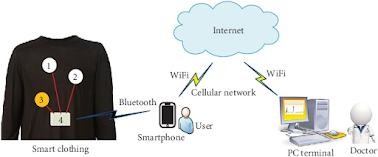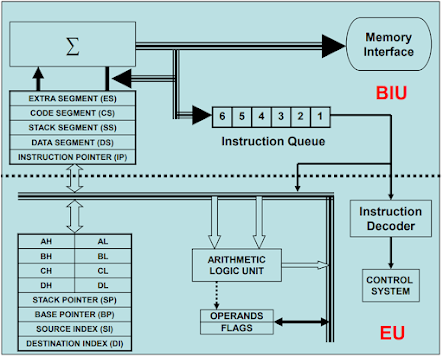SMART TEXTILE
Smart Textile
Smart textiles are one of the areas that provides added
value to textile materials. It is a sector that has been developed with new
technologies, new fibers, and textile materials. The production of smart or
intelligent textiles cooperate with other branches of science like
nanotechnology, materials science, design, electronics, and computer
engineering, etc. Smart textiles are classified into three groups as passive smart
textiles, active smart textiles and ultra smart textiles according to their performance
characteristics. Passive smart textiles are the first generation of smart textiles
and sense the external conditions; for instance, UV protecting clothing, conductive
fibers, etc. As active smart textiles respond to external conditions, ultra smart
textiles sense, react, and adopt themselves to conditions. Shape memory materials,
chromic materials, heat storage, and thermo-regulated fabrics are the typical
applications of active smart textiles.
Textiles,
with the basic characteristics of clothing, protection, and esthetics, are the
indispensable part of our lives, but in recent years with the development of
technology and the variation of requirements, the demand to smart materials and
intelligent textiles grows increasingly all over the world. In other words,
technology has also taken control of textile industry. Smart textiles have
superior performance and functionalities for the applications ranging from
simple to more complicated uses such as military, healthcare, sportswear, etc.
Smart or intelligent textiles can also be called as the next-generation
textiles.
When you hear the word smart, you probably
think of items that are wifi-enabled. This might be a television or even a
lightbulb. But smart technology doesn’t always need an internet connection.
Passive smart textiles are a good example of
this. These fabrics have functions beyond what you would normally expect
clothing to do. However, they do not use electronics or internet connection at
all.
This also means that these fabrics don’t
contain sensors or wires. They do not need to change because of the conditions
around them. All you need to do is wear a piece of clothing made with a passive
smart textile and know that it is working.
A passive smart textile’s
functions are going to be much simpler than those of an active smart textile.
This is because the state of the fabric will never actually change. There are
no electronics involved in these fabrics whatsoever.
This means that all of its
functions will allow it to remain in a static state the entire time it’s worn.
On the topic of static,
preventing static cling is one function that passive smart textiles can have.
There’s nothing more frustrating than pulling laundry out of the dryer to find
out it’s all stuck together by static cling. Anti-static textiles can help
reduce this effect.
You might also have anti-microbial
textiles. These
fabrics aim to reduce how often you get sick by preventing viruses and bacteria
from remaining on your clothes. This helps promote the health and well-being of
the wearer.
Another way to promote health and well-being is by protecting yourself from harmful UV rays. This can help prevent sunburns and skin cancer. And this is also a function that passive smart textiles can have.
ACTIVE SMART TEXTILES:
On the other hand, active
smart textiles are closer to what you probably think of when you talk about
smart technology. These fabrics will actually change to adjust the conditions
of the wearer. Some can even connect to apps and computer software.
In other words, these
fabrics actively do something to make the wearer’s life more comfortable or
convenient, rather than the fabric itself being what makes it smart as a
passive smart textile does.
The applications of active
smart textiles can be much more varied. This is because there are many
different ways that these fabrics can be changed and adjusted.
First of all, the healthcare Industry may
find some of these fabrics useful. Smart textiles can monitor a patient’s heart
rate, for example. This can alert nurses to any potential problems earlier
enough to help.
The military can also use
some of these fabrics. They can use wires integrated into the fabric to
transport data from one place to another quickly. This means that military
strategies can be updated in real-time.
They can also be used for
disaster relief. Some of these textiles can be used as power sources for
housing during natural disasters. This means that no matter what happens,
people will have a warm place to stay.
Finally, these fabrics can
also be connected to the internet. This can help tell you all sorts of things
like heart rate and blood pressure right on your smartphone. But it can also be
used for fun activities, such as gaming.



Comments
Post a Comment